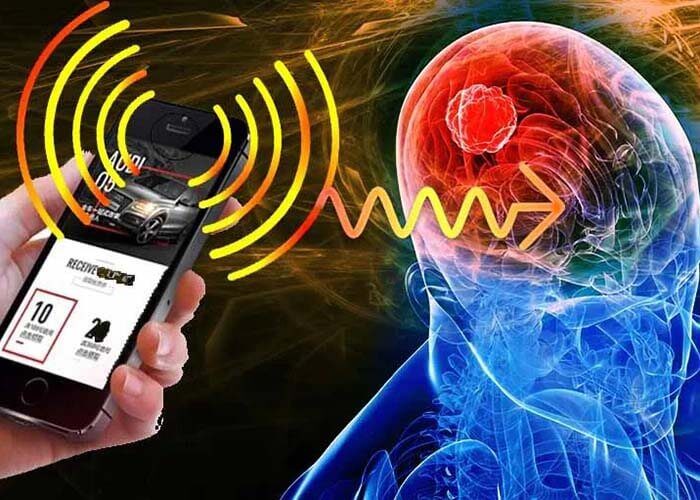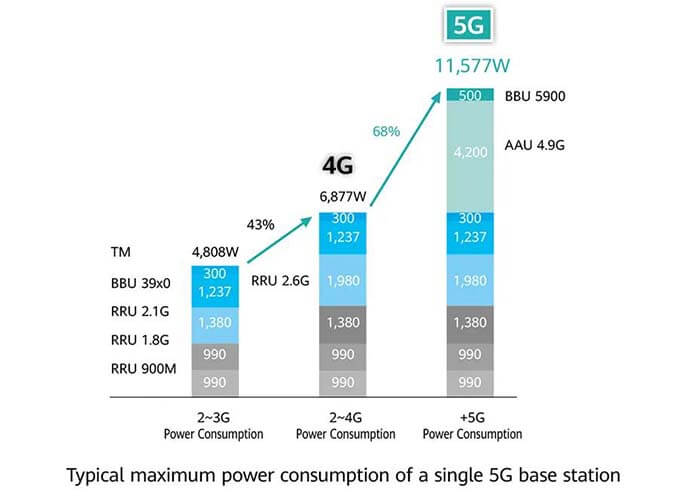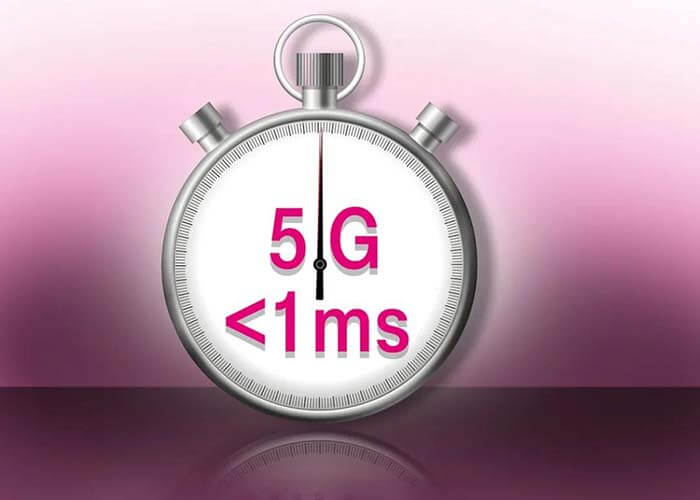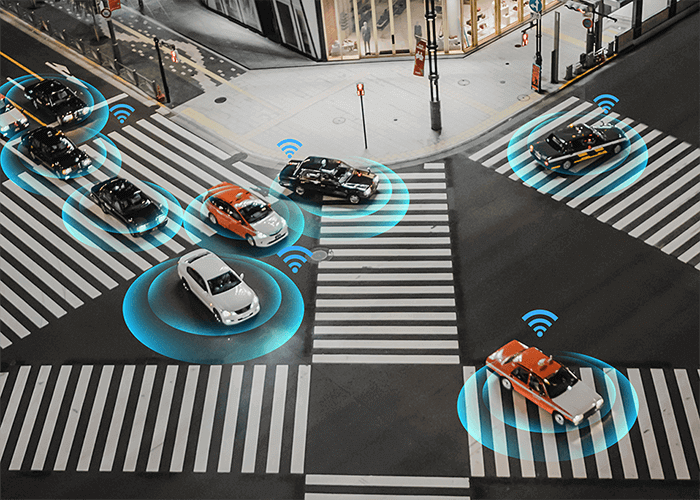9 truths about 5G being misunderstood, many people get it wrong.
1. How big is the radiation of the 5G base station?

5G is the same as the previous 4G and 3G and belongs to mobile communication technology. There is essentially no difference in the intensity of electromagnetic radiation. Operators need to comply with the same standards when building networks.
China’s “Electromagnetic Radiation Protection Standard” stipulates that the average power density limit of the public’s electromagnetic radiation exposure for any continuous 6 minutes is 40 microwatts/cm2, which is more than 10 times more stringent than the United States, Japan, and the European Union.
The base station’s towering signal towers may seem scary, but when the signal is transmitted to the mobile phone, it is the end of the battle. Considering the signal superimposition, the operator usually controls the signal to be around 8 microwatts/square centimeter, which is far lower than the national standard requirement.
Many people may not think that the mobile phone seems to be small and exquisite, but it is to be attached to the ear to make a call. In fact, the intensity of electromagnetic radiation is greater than the base station. Mobile phone manufacturers also need to comply with relevant standards to limit radiation within a safe range.
China’s “Mobile Phone Electromagnetic Radiation Partial Exposure Limits” is a mandatory standard that stipulates that the average electromagnetic radiation energy value absorbed by any 10 grams of biological tissue in any continuous 6 minutes shall not exceed 2 watts/kg. This standard is the same as the European requirements.
Both 5G base stations and 5G mobile phones comply with the same standards as 4G, and electromagnetic radiation is not stronger than 4G, so you can use them with confidence.
2. Does 5G need large channel bandwidth?
From the perspective of 5G enhanced mobile broadband, the peak rate must be able to reach the demand of 20Gbps, 5G does require a huge channel bandwidth.
For example, China Telecom and China Unicom each have a 100M bandwidth in the 3.5GHz band, and China Mobile has a 160M bandwidth in the 2.6GHz band, which is several times higher than the 10M to 20M bandwidth in the 4G era. If it is the millimeter-wave frequency band, each operator can even get a bandwidth of 800M to 1000M.
However, these medium and high-frequency coverage capabilities are weak, and the required sites are expensive. They are generally only used for urban and hotspot coverage. For suburban and rural areas, other frequency bands are needed for wide coverage.
These frequency bands used for coverage are generally from 3G and 4G, and the bandwidth is generally not large. It is good to have a 20M. In fact, the agreement stipulates that 5M bandwidth can also be used for 5G, but this rate is no different from 4G.
China Telecom and China Unicom have achieved a large bandwidth of 40M on 2100M through joint construction and shared efforts. The 30M of broadcast and television’s 700M is also the only one in the world with ultra-large bandwidth, and finally, four companies have shared it.
3. 5G comes standard with Massive MIMO technology?
In fact, there are many frequency bands for deploying 5G, including low frequency 700M less than 1GHz, 1800M and 2100M of traditional FDD intermediate frequency, 2600M and 3500M of TDD intermediate frequency, and newly introduced millimeter waves.
Due to the long wavelength and large antenna volume, it is difficult to implement large-scale antennas for low frequencies. The base station is still based on 2T4R or 4T4R.
For FDD intermediate frequencies, 5G is generally upgraded based on 4G base stations, and continues to use 4T4R;
For TDD intermediate frequency, as the main capacity layer of 5G, Massive MIMO technology with 64 antennas or 32 antennas is indeed used extensively, but 8T8R or 4T4R equipment is still used for suburban areas to reduce costs.
For millimeter waves, 4T4R and large-scale phased antenna arrays are generally used. The number of concurrent streams that can be supported is limited. The gain mainly depends on beamforming and beam management, which is different from the intermediate frequency, which is equivalent to a special Massive MIMO.
All in all, 5G does not necessarily use Massive MIMO. For the capacity layer, Massive MIMO technology is generally used to enhance the cell capacity, and for the overlay layer, 4T4R is generally used.
4. Will 5G deploy a large number of small base stations?

The deployment of 5G is similar to that of 4G, with the macro station being the main station and the micro station being the auxiliary. For ultra-high-capacity hot spots, such as stadiums, large gathering places, commercial streets, etc., small base stations are used to supplement the heat, and it is easy to disguise and hide.
For wide coverage, mid-and high-frequency bands will not be widely used. Major operators are digging their heads to re-cultivate the mid-and low-frequency bands being used by 3G and 4G into 5G, such as the domestic 1800M, 2100M, 700M, and so on.
Operators always have to consider cost issues, and always want to make money back after investing money. Therefore, the saying that 5G small base stations are everywhere will not appear in practice.
5. Does WiFi also support 5G?
Many people often hear the term 5G WiFi and have seen the word 5G behind the name of WiFi. Is there any WiFi that supports 5G?
In fact, the 5G in the 5G base station refers to the fifth generation of mobile communications, where G is the first letter of the English Generation (generation); and the 5G in the 5G WiFi refers to the frequency band used by WiFi is 5G Hertz (Hz), Different from the 2.4GHz frequency band used by traditional WiFi.
These two 5Gs seem to be the same, but in fact, they have completely different meanings. The exact distinction depends on the context. In fact, it has little effect on life.
6. Are 5G base stations and mobile phones very expensive?

The capacity of 5G is several times that of 4G. On average, sending 1 bit of data consumes much less energy than 4G. It is generally believed that the energy efficiency of 5G is 90% higher than that of 4G. For example, with 1 kilowatt-hour of energy consumption, 300 ultra-definition movies can be transmitted and downloaded in the 4G era, and 5000 ultra-definition movies can be transmitted and downloaded in the 5G era.
As for the 5G electricity charges mentioned by the operators at this stage, it is mainly caused by the fact that the base station is on but there are not many users, and the electricity is consumed but the data is not continuously downloaded. After the 5G network traffic comes up, energy efficiency will naturally increase, which is why major operators are unanimously committed to increasing the 5G occupancy rate.
7. The latency of the 5G network is less than 1 millisecond?

What is the concept of a 1-millisecond delay? The conduction speed of human nerve fibers is 29 to 200 milliseconds. Research has found that for real-time interactive games, the 50-millisecond delay does not affect the experience at all.
When the frame rate of a movie is greater than 24 frames per second (one frame every 41.6 milliseconds), the human eye will feel it is very smooth without any lag. If the sound is advanced or delayed by 40 to 60 milliseconds, people will not feel that the sound and picture are out of sync.
There is no commercial application yet, which requires a delay of 1 millisecond. In fact, the 1-millisecond delay mentioned in 5G is only the air interface user plane delay from the terminal to the base station. There are processing delays, transmission delays, core network delays, application delays, and so on. The end-to-end two-way delay can reach tens of milliseconds, which is very good.
For industry applications of less than 10 milliseconds, a series of technologies such as optimization of the frame structure, sinking of the core network user plane, network slicing, and edge computing are needed to achieve this.
8. Does autonomous driving need 5G?

Autonomous driving is not remote driving, and 5G is not a necessary condition for autonomous driving. Autonomous driving is just a microcosm of the exploration of 5G industry applications.
The prerequisite for autonomous driving is autonomous and safe driving. Without any communication with the outside world, the car can realize safe autonomous driving based solely on its own judgment. To achieve autonomous and safe driving, vehicles need to be equipped with cameras, lidars, millimeter-wave radars, high-precision positioning, and other equipment, and sufficient environmental information can be collected before effective decision-making.
Although 5G is not necessary, it can input auxiliary information from the outside world through the network to make autonomous driving more efficient, and then realize the ubiquitous interconnection of cars and people, cars and cars, and cars and things, and coordinated driving to make road traffic more efficient.
9. Will 5G bring a disruptive revolution?
For individuals, starting from the 3G era, with the popularity of WiFi and smartphones, the mobile Internet ecology has been formed. The high speed provided by 5G will give birth to some new applications, but they will still operate within the existing framework. , Subversion is unlikely, unless there is a similar historical opportunity for the migration of Internet devices from computers to mobile phones.
For industry applications, it is still in its infancy. For most applications, 5G only provides large-bandwidth and low-latency access connections, and more importantly, it is the upper-layer services. Even 5G is not necessary, as long as it can provide similar access performance, other existing technologies can also be used.
With the gradual enlightenment and penetration of 5G industry applications, it may indeed gradually become the cornerstone of communications that empowers thousands of industries, but this is a long process, and it may even flourish in the 6G era.
Therefore, 5G is only a new generation of mobile communication technology. It is unrealistic to expect this technology to bring a disruptive revolution to society, but it cannot be called a scam, because the digital transformation of various industries is irreversible. 5G is only one link in this huge chain, and it is difficult to withstand such large expectations.
Besides the 9 Truths About 5G Being Misunderstood article, you may also be interested in the below articles.
What is the difference between WIFI and WLAN?
Summary of 41 Basic Knowledge of LTE
What Is The 5G Network Slicing?
